Supporting Trees and Plant Guarantee
Please Scroll down to view our Guarantee terms and the guide to follow!
Our trees are cultivated in open fields to facilitate faster growth compared to potting. We tend to their growth until they reach a certain height and thickness that is suitable for our stock requirements. When the trees reach this stage, they are removed from the ground as root-ball trees while dormant. The next step involves containerising the trees by adding their root-balls to large pots, which are then filled with vermiculite and compost. It takes some time for fresh roots to establish in the pot's soil. Once the trees have developed strong roots in the pot, they are available for sale to our customers.

To ensure the desired tree shape, our full standard trees are initially trained with a thick bamboo cane. The leading stem is guided up the cane until it reaches a height of around 190-200cm, where the canopy begins. While this technique helps create a straight, single stem, it also serves a crucial function in supporting the young stem from breaking or bending in strong winds. It is crucial to leave the bamboo cane in place until the stem becomes strong and rigid, which typically occurs when the tree has a 14-16cm girth for soft wood trees such as Magnolia grandiflora.
While it is important to remove the bamboo cane at the appropriate time, it is crucial to keep it in place for young trees as they are prone to breaking in storms. Some customers have received advice to remove the bamboo cane immediately after planting, but we strongly disagree with this recommendation. In our experience, leaving the cane in place until the tree is strong enough to support itself is necessary. Removing the cane too soon could result in the young tree breaking in strong winds.
To ensure the safety of the young tree, we recommend securing the bamboo cane with waterproof electrical tape. This will also allow the tree stem to safely expand over time. While bamboo is a strong material, it will eventually weaken over time due to the elements and constant support of the tree's stem. Therefore, it is important to check the bamboo cane's condition as autumn approaches and replace it if necessary. We suggest using black electrical tape for securing the bamboo cane.
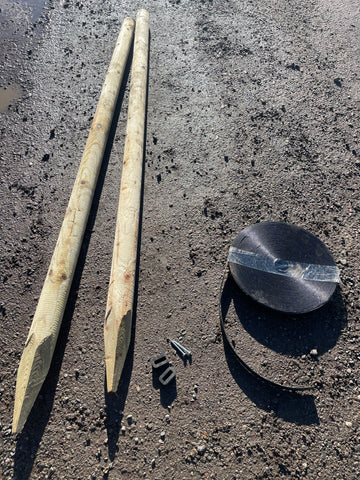
Planting Kits
Now that you have successfully prevented your tree from snapping, let's discuss how to protect your semi-mature trees from being pushed over by strong winds. For this, you'll need a planting kit that offers a different and additional solution to the bamboo cane.
A planting kit helps to firmly anchor your semi-mature tree in place to prevent the roots from moving. In the event of heavy winds, the root can be rocked, and new root growth can be ripped away from the original root. This can cause trees to fail to establish or even die.
Therefore, a planting kit is necessary to keep your semi-mature trees secure and ensure their proper growth and development.
Planting Guide
To give your tree the best possible start, we’ve created a simple step-by-step planting guide with clear photos. As long as these steps were followed and photographed at the time of planting, your tree will be covered by our planting guarantee. If the tree fails to establish due to a planting-related issue, and you can provide the photo evidence when making a claim, we’ll offer a replacement or credit—no fuss. This way, you can plant with confidence knowing you’re supported from day one.
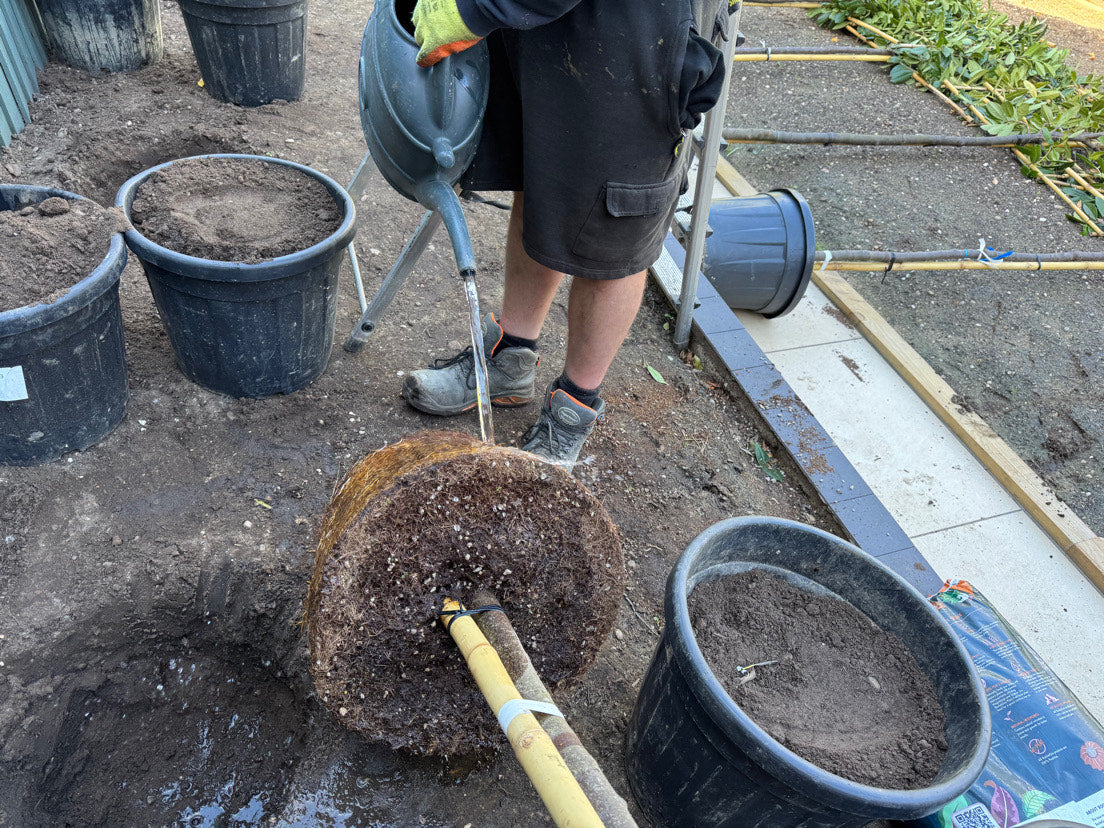
Step 1
Soak the Root Ball
Before planting, give your Red Robin a good drink. Stand the pot in a bucket of water for 10–15 minutes so the root ball becomes fully soaked. This helps the plant avoid shock when it goes into the ground.
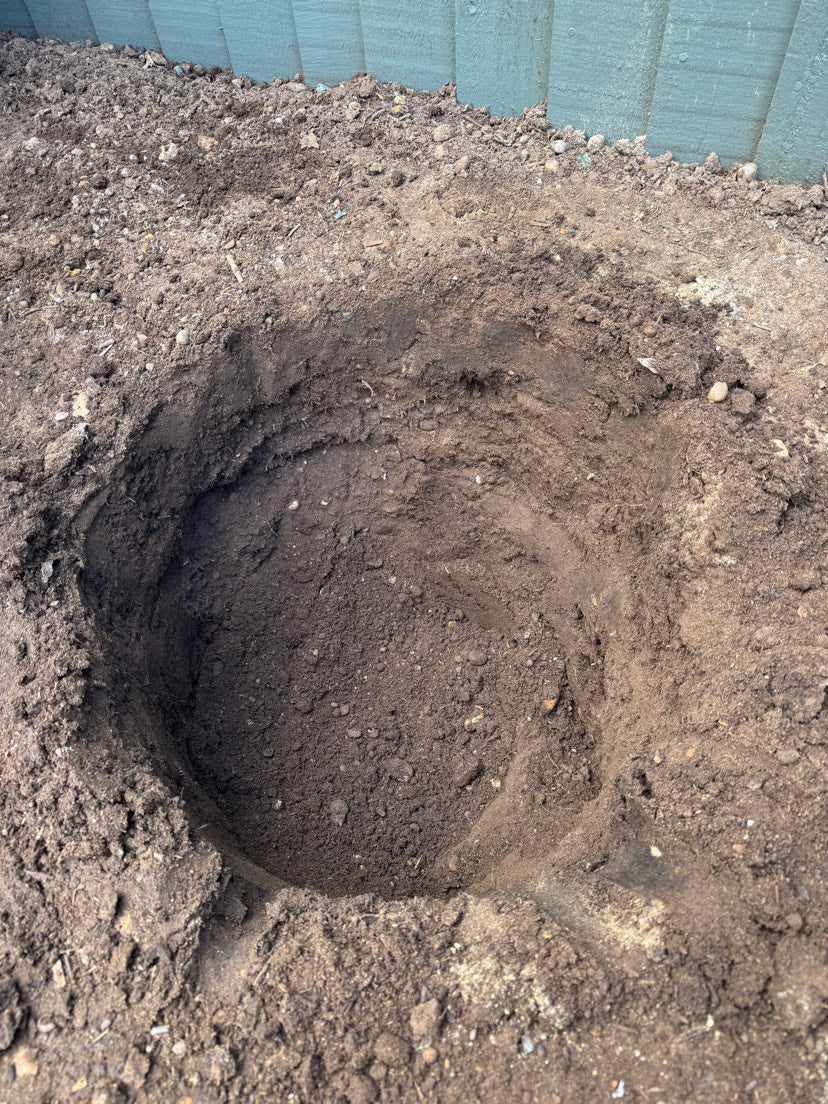
Step 2 -
Dig a Proper Hole (Photo required for guarantee)
Dig a hole that’s twice as wide as the pot and about the same depth. Loosen the soil at the bottom and sides with a garden fork – this helps roots grow outwards easily.
If your soil is heavy clay or very sandy:
- Mix the dug-out soil with well-rotted compost to improve structure.
- blood, fish & bone fertiliser to give the plant a nutrient boost.
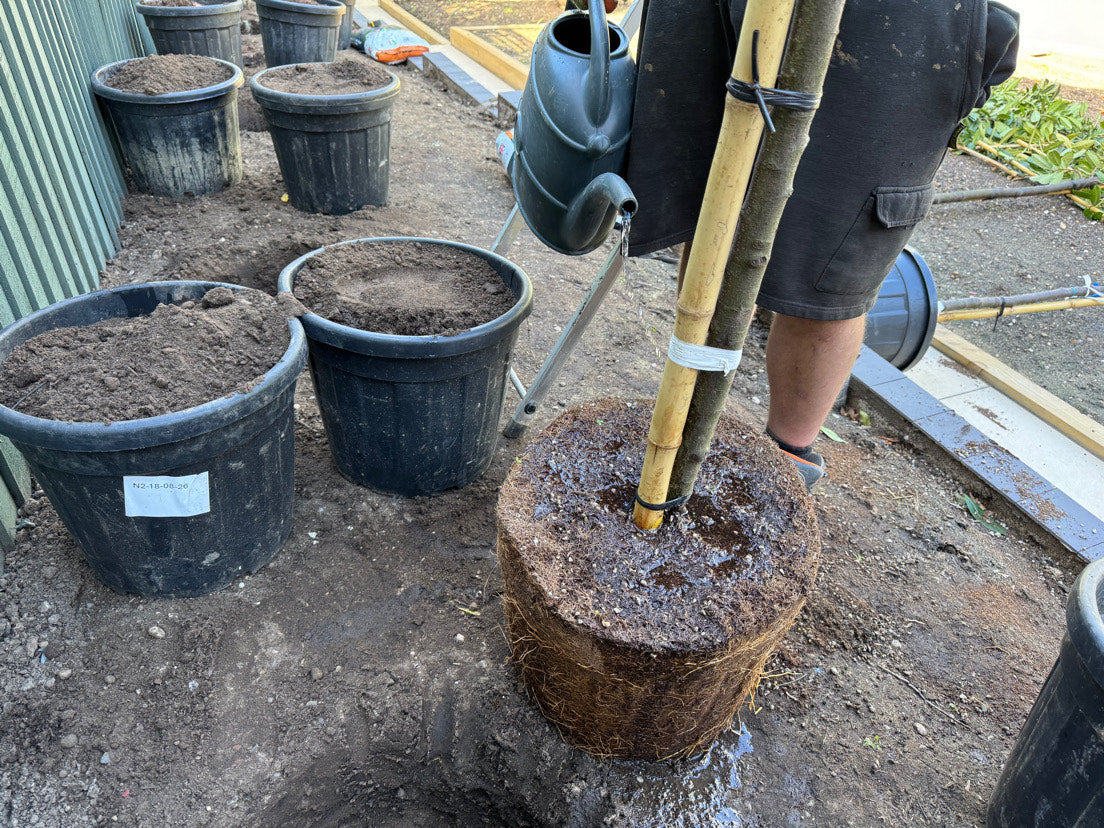
Step 3
Prepare the Plant
Take the plant out of its pot gently. Check the roots:
If they’re tightly circling around the root ball, tease them apart with your fingers or a hand fork.
This encourages them to grow outward into the soil instead of staying bunched up.
Step 4
Place in the hole (Photo required for guarantee)
Put the plant in the hole so that the top of the root ball is level with the soil surface — not deeper. The base of the stem should be just above ground level, with the first roots (root flare) slightly covered.
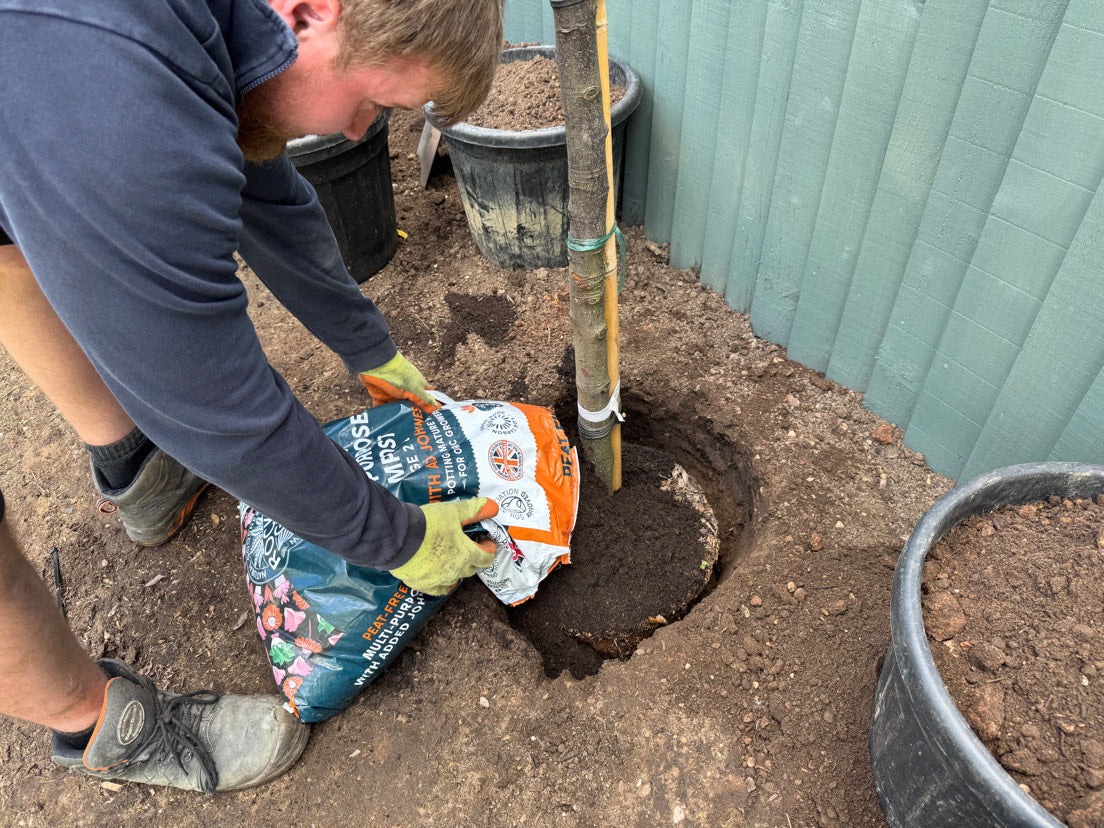
Step 5
Backfill and firm in (Photo required for guarantee)
Refill the hole with the original soil (and compost mix, if used), packing gently around the roots in layers. Firm it down with your hands or foot — but don’t press directly on the root ball.
step 6
Stake the tree (Clear stem trees only) (Photo required for guarantee)
se a sturdy stake that's about two-thirds the height of the trunk
Position the stake just outside the Hole, on the windward side.
Use a soft, adjustable tree tie to secure the trunk to the stake about one-third up.
Make sure the tie is firm but not tight — the trunk should be able to move slightly in the wind.
Check the tie regularly and loosen as the tree grows.
Stakes can usually be removed after , once the tree is stable on its own.
step 7
Final Tidy up! Mulch the base and double check the rootball is firmly in the ground (Photo required for guarantee)
Spread a 5–8 cm layer of mulch (like compost, bark, or leaf mould) around the base to:
Double check the sides are packed in with no air pockets and the top of the rootball is firmly level with the rest of the ground
Keep moisture in
Stop weeds growing
Protect the roots from temperature swings
Important: Keep mulch 10 cm away from the stem to prevent rotting.
